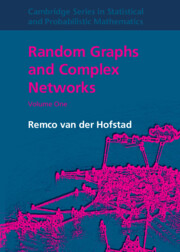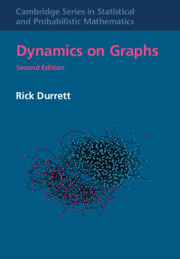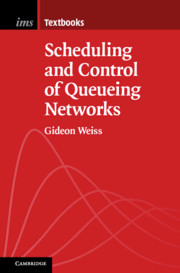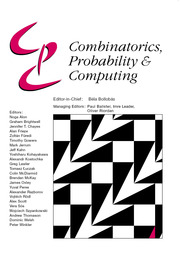Random Graphs and Complex Networks
Complex networks are key to describing the connected nature of the society that we live in. This book, the second of two volumes, describes the local structure of random graph models for real-world networks and determines when these models have a giant component and when they are small-, and ultra-small, worlds. This is the first book to cover the theory and implications of local convergence, a crucial technique in the analysis of sparse random graphs. Suitable as a resource for researchers and PhD-level courses, it uses examples of real-world networks, such as the Internet and citation networks, as motivation for the models that are discussed, and includes exercises at the end of each chapter to develop intuition. The book closes with an extensive discussion of related models and problems that demonstratemodern approaches to network theory, such as community structure and directed models.
- Features many exercises on the theory of networks and properties of network models
- Gives the simplest possible proofs for the key results, demonstrating the beauty of the field and the methods used
- The first text on local convergence of networks, a key notion in the analysis of sparse random graphs
Reviews & endorsements
'Even before its publication, the second volume of 'Random graphs and complex networks' has become a classic for anyone working in random graph theory. Remco van der Hofstad manages to treat in detail a very large extent of this fascinating theory, while staying extremely pedagogical and accessible to a broad audience. It covers in depth the local convergence and small-world properties of scale-free random graphs. Together with the first volume, these are among the essential books every probabilist should have on their shelf!' Nicolas Curien, Université Paris-Saclay
'This is a wonderful book, covering major topics at the forefront of modern random graph theory and its application to the modelling and description of real-world complex networks. Whereas Volume 1 covers basic models, ideas and techniques, Volume 2 focusses on two key topics - connected components and small world properties – for three different classes of random graphs - inhomogeneous random graphs, configuration models, preferential attachment models. At the basis is the notion of local convergence, which is powerful tool to describe large sparse random graphs. Suitable for researchers at the level of PhD and above, the two volumes will become a landmark in network science.' Frank den Hollander, Leiden University
Product details
February 2024Hardback
9781107174009
506 pages
261 × 186 × 33 mm
1.13kg
Not yet published - available from February 2025
Table of Contents
- Preface
- Possible course outline
- Part I. Preliminaries:
- 1. Introduction and preliminaries
- 2. Local convergence of random graphs
- Part II. Connected Components in Random Graphs:
- 3. Connected components in general inhomogeneous random graphs
- 4. Connected components in configuration models
- 5. Connected components in preferential attachment models
- Part III. Small-world Properties of Random Graphs:
- 6. Small-world phenomena in inhomogeneous random graphs
- 7. Small-world phenomena in configuration models
- 8. Small-world phenomena in preferential attachment models
- Part IV. Related Models and Problems:
- 9. Related models
- Appendix
- Glossary
- References
- Index.








